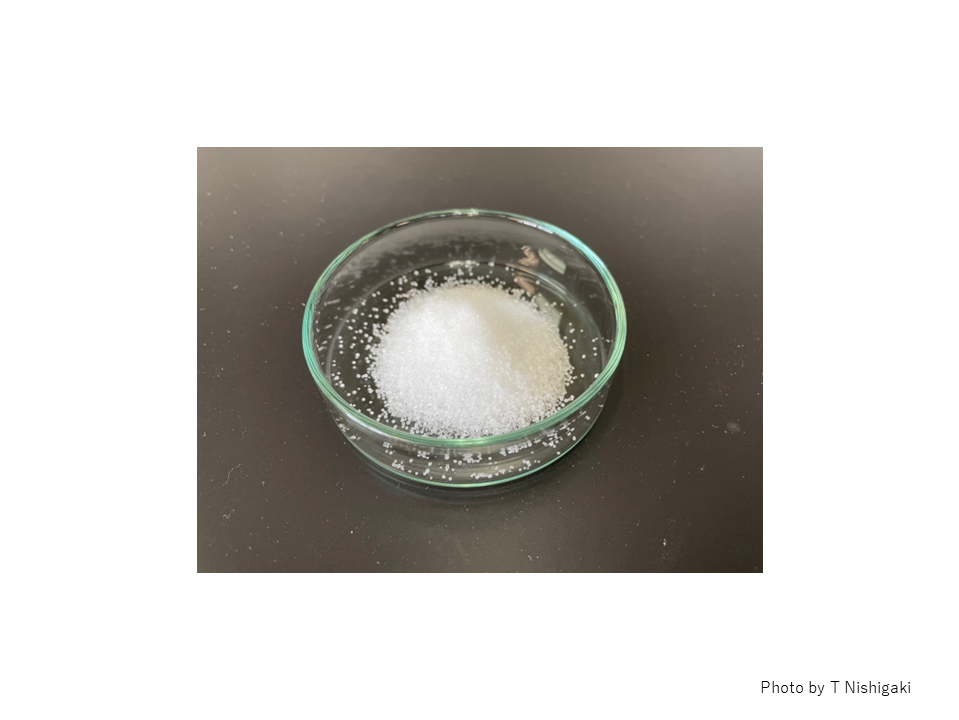Pick Up
841. Table Salt for Soil Analysis ! ?

841. Table Salt for Soil Analysis ! ?
Soils have a unique property known as "phosphorus (P) retention capacity (or known as ‘phosphate absorption coefficient’ in Japan)," which refers to its ability to bind with phosphate. In soils with a high P retention capacity, P fertilizers applied to the soil tend to bind with the soil instead of being absorbed by crops. This reduces the efficiency of fertilization. Understanding soil P retention capacity in croplands helps farmers determine the appropriate amount of P fertilizer to apply, making it a valuable guideline in agricultural management.
Traditionally, chemical analysis is needed to determine P retention capacity. Consequently, farmers send soil samples to specialized institutions for analysis, much like routine soil testing, to assess the P retention capacity of their fields.
Recent research has uncovered an unexpected link between soil P retention capacity and the small amount of moisture present in dry soil[1][2]. This finding was surprising because it connected the seemingly unrelated chemical property, i.e., P retention capacity, to the physical property of soil, i.e., soil moisture content. Furthermore, soil moisture content can be determined without complex chemical testing by simply measuring the weight of the soil before and after drying. This could potentially simplify the process of assessing P retention capacity.
However, there was a challenge to overcome. Moisture content in dry soil is not very stable. Because the soil is dry, the moisture content is minimal, often less than 1%. Consequently, it is easily affected by the temperature and humidity in the air during the drying process, making it unsuitable for accurate estimation of P retention capacity. Stabilizing this low moisture content became the key to practical application.
The solution to this challenge was found in a research presentation on plant drought resistance that I happened to attend. The presentation showed an experiment using saturated salt solutions in a closed chamber to control relative humidity to investigate how plant leaves wilt under dry condition. I learned for the first time that saturated salt solutions can maintain constant relative humidity level in a sealed chamber from this presentation and the relative humidity can be changed by different type of salts[3]. Moreover, I found that a saturated solution of table salt (sodium chloride, NaCl) maintains almost constant relative humidity regardless of temperature. Since table salt is readily available to everyone, I decided to use it. After some trial and error, I concluded that the following method would prepare the soil with a stable moisture content suitable for estimating P retention capacity.
"Place a dry soil in a closed container, e.g., a Tupperware or snack can, with a saturated table salt solution for a week."
That's it. This simple method can prepare a soil with the optimum moisture content for estimating P retention capacity with high reproducibility regardless of the conditions outside. In addition, the accuracy of the model used to estimate P retention capacity based on the soil moisture content was surprisingly high (coefficient of determination R2 = 0.870; an index of how well the predicted values match the actual values, with higher value closer to 1 indicating higher accuracy)[4].
Thus, a method of soil analysis using a table salt, which is commonly found in every house, was developed. This technique is particularly useful in developing countries such as Madagascar, where experimental facilities may not be well equipped. In Japan, it might also be used as a safe and affordable experiment, perhaps even for children's homework during summer vacation. In whatever form, I hope this technology can be of service to someone, somewhere in the world.
This research was conducted with support from the Japan Prize Foundation and SATREPS Project “Breakthrough in Nutrient Use Efficiency for Rice by Genetic Improvement and Fertility Sensing Techniques in Africa” (Principal Investigator: TSUJIMOTO Yasuhiro, JIRCAS).
Picture caption: Sodium chloride (table salt). According to international food standards (Codex standards), table salt consists of 97% or more sodium chloride. Laboratory grade sodium chloride was used in the experiments.
References
[1] Kinoshita and Tani (2020) https://doi.org/10.20710/dojo.91.5_385
[2] Nishigaki et al. (2021) https://www.sciencedirect.com/science/article/pii/S0016706121004067
[3] Greenspan (1977) https://doi.org/10.6028/jres.081A.011
[4] Nishigaki et al. (2023) https://www.tandfonline.com/doi/full/10.1080/00380768.2023.2245420
Information Page on Agricultural Research in Africa
https://www.jircas.go.jp/en/africa-research
335. Using Organic Materials to Overcome Low Productivity of Rice Cultivation in Madagascar
https://www.jircas.go.jp/en/program/proc/blog/20210713
354. When Soil Changes, Fertilizer Effectiveness Also Changes ― Towards Fine-tuning of Fertilizer Management―
https://www.jircas.go.jp/en/program/proc/blog/20210811
698. Challenges to Fertilizer Availability
https://www.jircas.go.jp/en/program/proc/blog/20230118
Contributor: NISHIGAKI Tomohiro (Crop, Livestock and Environment Division)
